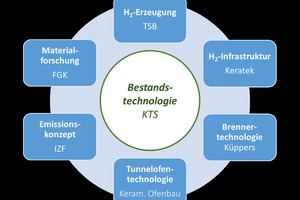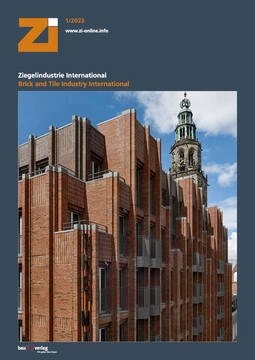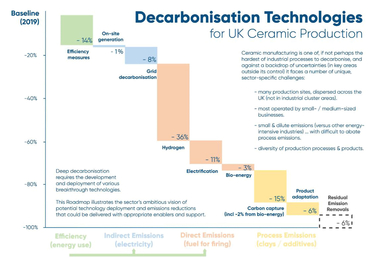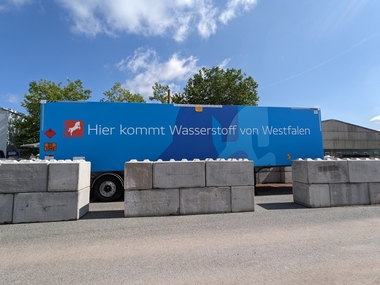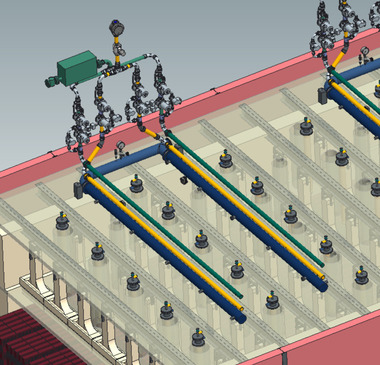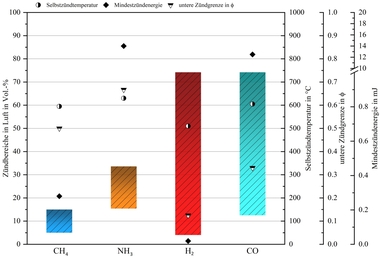Joint project „Development of an innovative hydrogen-based furnace technology for the production of ceramic materials (H2TO)“ started
The goal of climate neutrality by 2045 affects energy-intensive industries in particular. The ceramics industry currently still uses fossil fuels almost exclusively for drying and firing its products. The developments of the recent energy crisis and not least the further increase in the price of CO2 certificates are leading to an increase in the price of fuel that threatens the very existence of the industry and can only be countered by highly innovative technological development.
Building on the national hydrogen strategy of the German government, a concept for a hydrogen-powered tunnel kiln technology for a real production plant for the manufacture of ceramic fireclay is being developed within the framework of the joint project “Development of an innovative hydrogen-based kiln technology for the production of ceramic materials (H2TO)” in the programme “Avoidance of climate-relevant process emissions - KlimPro” of the German Federal Ministry of Education and Research BMBF, starting on 1 January 2023. The intention is to demonstrate the plant with unconditional consideration of the local conditions. The results of the project should enable the kiln technology to be developed to be implemented in the existing kiln.
The project is divided into three strands: the investigation of the possibilities for local production and supply with green hydrogen, the development of a tunnel kiln technology, especially with regard to mutually influencing energy and process-related emissions for the production of the ceramics, and the investigation and adaptation of the materials to the changed process conditions.
The supply of hydrogen is to be designed decentrally, on the site of the production plant via electrolysis, and the emissions-related process innovation is to be compared with the existing technology via LCA. The energy concept will show how much the ceramics industry is and will be dependent on a central H2 infrastructure for emission-neutral production. With a high contribution margin, the companies can be enabled at an early stage to gradually convert to hydrogen, depending on supply and economic constraints.
Condensing technology, among other things, is to be integrated into the tunnel kiln technology. This already promises a massive increase in efficiency with regard to the overall balance in conventional firing, but will only unfold its full potential with higher steam volumes with hydrogen.
Condensing technology, among other things, is to be integrated into the tunnel kiln technology. This already promises a massive increase in efficiency with regard to the overall balance in conventional firing, but will only unfold its full potential with higher steam volumes with hydrogen.
Finally, the development of the hydrogen concept should show medium-sized ceramic producers the possibilities of feasibility, the effort and the investment volume of the technology transformation to hydrogen operation and thus have a direct impact on the energy transition of ceramic companies.
The project is being carried out in cooperation between KTS Kärlicher Ton- und Schamottewerke Mannheim & Co. KG, IZF Institut für Ziegelforschung e.V., Transferstelle Bingen (TSB) of ITB - Institut für Innovation, Transfer und Beratung gemeinnützige GmbH, KERATEK GmbH, Keramischer OFENBAU GmbH, Küppers Solutions GmbH and the Forschungsinstitut für Glas | Keramik GmbH as coordinator. The duration is 3 years.

